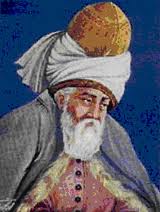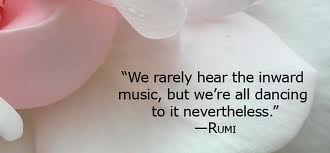Cultural Confluence: Islam in/and the West
Muslim Society and Civilization
History is not a mere glance in the rearview mirror, but a vision reflecting on the past and demanding of us to project on the untraveled road ahead. This perspective is the thread that runs through the theme of the three audio lectures presented here. By identifying with the parallels of events and taking the right turns at junctures, history doesn’t have to repeat itself as the ghost of past miseries. Read more
May
you
be filled
with light...
to see
your
shadow
shadow
shadow.

Parry arcs, a Sun pillar, a parhelion, a halo and additional four types of different arcs, rare atmospheric optic phenomena, all appear at the same moment in this recently taken photo in New Mexico, USA. Photo sent by Laurie de Nuccio

"The mind journeys in the footsteps of the heart and realizes that the peace of mind is a mere temporality towards attaining the tranquility of the soul with the ultimate aim of arriving at the state of being content and contented with the Divine through subconscious connectedness. There, one hopes for a fleeting glimpse of a spiritual ambiance that soothes the soul in the sublime."
"While clarity and ambiguity play their games through a discourse of linguistic simplicity and philosophical complexity, Rumi artfully simplifies challenging thoughts and beautifully infuses complex issues by inviting us into the garden of the Mathnawi from whence bridges span horizons between the violet mist of daybreak and the magenta dusk of nightfall."
In the Cosmic Whirl of a Lotus
By
Zaman Stanizai, Ph.D.
The poetry of Mawlana Jalaluddin Muhammad Balkhi Rumi is a treatise on interactive Divine love that nurtures spiritual stirrings in the depth of the human heart. Rumi employs the poetic vernacular to the optimum in his search to find a blueprint for the path to perfection. Through his supplications, contemplations, meditations, as well as his lyrical yearnings for the Divine love Rumi weaves the weft of mysticism from the woof of Qur’anic fiber turning it into a woolen cloak that mantles the pious and the pure. Rumi’s magnum opus, Mathnawi-i Ma’nawi or the Spiritual Couplets begins with a calling of the reed flute as a longing to rejoin its original source in eternity. In the suspense between reason and rhyme Rumi clarifies the mythical to the ascetic and the aesthetic to the mystified.
While words can never convey the full depth of thought, poetic parlance occasionally compensates for this inadequacy as it attempts to reveal the jealously guarded meaning from behind the veils of seclusion—where meaning is woven from metaphors and allegories beyond the literal and the interpretive. Rumi’s poetry defies cultural and linguistic stereotyping despite attempts to reduce the universality of his thought to cultural confines. Rumi’s work has been translated beyond place and time so that the beauty of thought does not surrender to vernacular dominance nor is it sacrificed at the altar of poetic niceties.
The mind journeys in the footsteps of the heart and realizes that the peace of mind is a mere temporality towards attaining the tranquility of the soul with the ultimate aim of arriving at the state of being content and contented with the Divine through subconscious connectedness. There, one hopes for a fleeting glimpse of a spiritual ambiance that soothes the soul in the sublime.
While clarity and ambiguity play their games through a discourse of linguistic simplicity and philosophical complexity, Rumi artfully simplifies challenging thoughts and beautifully infuses complex issues by inviting us into the garden of the Mathnawi from whence bridges span horizons between the violet mist of daybreak and the magenta dusk of nightfall. In the realm of the imaginal one may glimpse the beauty of thought flourishing as a lotus on the serene surface of a reflective pond gazing into the indigo firmament for inspiration while firmly grounded in the nurturing womb of the earth beneath. As the blue-violet hue of the lotus petals unfurl around the stamen in contemplation, one may be able to lift up layers of unfolding meanings, from the lotus and life. Like Rumi you too may spin in the cosmic whirl of the sacred lotus with the resonance of the ‘voice within.’

A prelude to Rising in Meaning in Re-versed Revelations
On the Meaning of Meaning:
Re-rhyming Rumi
Rumi’s timeless poetry stirs in the spirit those who don’t turn in the body in search of the divine within. In Islam’s rich literary tradition the Sufis have carved a niche of their own. Because of the powerful pull of this tradition, many poets have eventually become Sufis whereas Rumi was a Sufi who eventually became a poet.

On the Occasion of Rumi’s Spiritual Reunion with the Divine
The Veiling of the Revealed
in the Darkest Night of Light
We often celebrate time as an instance that rises to the occasion of an opportune moment in which we connect with other, with the other, with none other, but the Divine in the universal unconscious. In that connectivity with the other we lose ourselves, our self and self-centeredness. Thus, it is in the loss of the self that we belong to the world and not the other way around—we find the truth of our triviality in the totality of the incomprehensible universe. That realization is instanced in the mirror of time as the celebration of a new beginning in a higher realm of awareness.
For a related audio presentation on this topic visit the Lectures Presentation page and listen to the lecture of the same title on Sufism presented at the Skirball Center in Los Angeles, California on September 25, 2008. Jahan Stanizai's introduction to Islamic Spiritual Tradition precedes the presentation.
L i k e A R a i n b o w
Islamic spirituality consists of both exoteric and esoteric dimensions. Within esoteric Islam, Sufism is a journey from the outward to the inward—a journey between transcendence and immanence in which the Sufis become the personification of the ideal condition of fitra—inner and outer harmony. This harmony is sought through knowledge and practices common to many spiritual traditions.